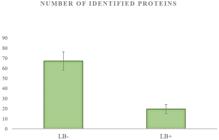Abstract
Traditional methods for the evaluation of oocyte quality are based on morphological classification of the follicle, cumulus-oocyte complex, polar body and meiotic spindle. This study is focused on the differences between the morphological assessment of oocyte quality, the assessment based on Lissamine Green B (LB) staining and the analysis of oocytes using a proteomic approach. We evaluated the effectiveness of electrochemical and chemical parthenogenetic activation under our laboratory conditions and evaluated the applicability of Lissamine Green B staining of cumulus-oocyte complexes (COCs) as a non-invasive method for predicting the maturational and developmental competence of porcine oocytes cultured in vitro. We determined that chemical parthenogenetic activation using ionomycin and 6-dimethylaminopurine was slightly more effective than electrochemical activation. After oocyte selection according to LB staining, we found significant differences (P<0.05) between the LB- group and LB+ group and the control group in their maturation, cleavage rate and rate of blastocysts. Proteomic analyses identified a selection of proteins that were differentially expressed in each group of analysed oocytes. Oocytes of the LB- group exhibited an increased variability of proteins involved in transcription regulation, proteosynthesis and the protein folding crucial for oocyte maturation and further embryonic development. These results found a better competence of LB- oocytes in maturation, cleavage and ability to reach the blastocyst stage.
Keywords:
pig; oocyte quality; Lissamine Green B; parthenogenetic activation; mass spectrometry

 Thumbnail
Thumbnail
 Thumbnail
Thumbnail

